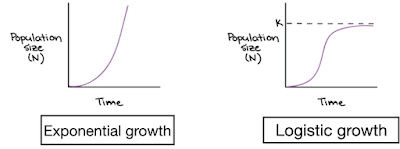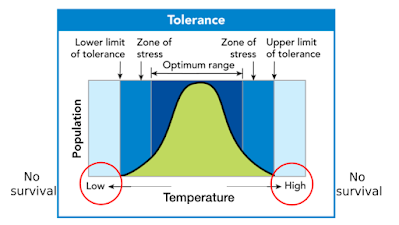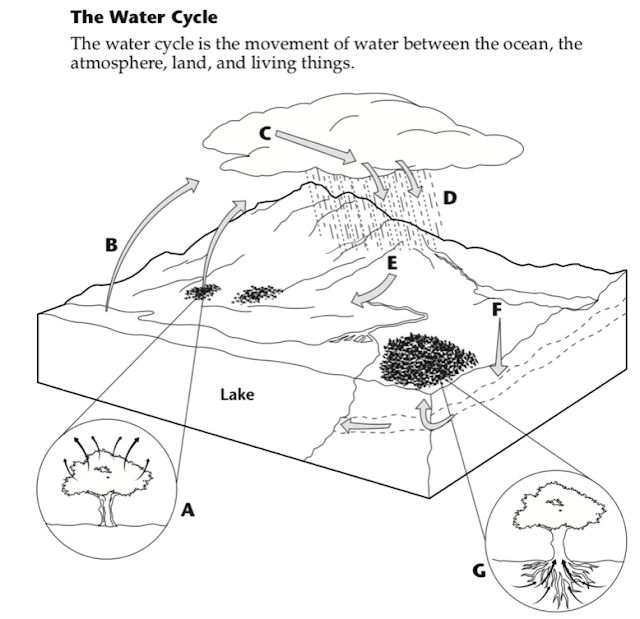Biology Index
Where are we going with this? The information on this page should increase understanding related to this standard: Understand the environment and how each organism fits in and analyze the biogeochemical cycles.
Article includes ideas, images, and content from Troy Smigielski (2022-04)
Communities and Ecosystems Dynamics(So, how things interact and change?)
Each ecosystem has its own set of conditions, which include climate and weather.
Wait! How is climate different than weather?
Weather is the day-to-day conditions. Climate is the average, year-to-year conditions.
A serious issue relating to global climate in the 21st Century is the Greenhouse Effect. What is that?
So, the sun radiates energy to the earth. Passing through the atmosphere, it warms the air and when it strikes the surface of the earth, it warms that, too. Some of the energy will bounce off the atmosphere back into space. The warmed parts of the earth also, after being heated up by the sun, radiate some of the heat back into space.
Enter the greenhouse gases (such as carbon dioxide).
Some of the heat that would radiate back into space is absorbed by greenhouse gases and reflected back to the planet's surface.
A greenhouse works this way. The radiated light from the sun passes into the greenhouse and warms up everything. The warmed up everything then gives off heat that is trapped by the glass of the greenhouse. Partly, this has to do with the frequencies and wavelengths of the radiation coming in and the heat going out. To keep is simple, just know that the sun's energy goes in and the heat gets "trapped."
The greenhouse effect in global climate works the same way. Some of the energy that would have radiated back into space is trapped and the result is an overall increase in temperatures.
Moving on…
Each ecosystem also has a group of biotic and abiotic factors.
The biotic factors all have their own place in the ecosystem. What is the term that describes where an animal lives?
A habitat is an area with a particular combination of physical and biological environmental factors that influence which organisms can live within it.
There are smaller habitats within each habitat. These are called microhabitats.
Each microhabitat can have its own set of environmental conditions called its microclimate.
Climate plays a big role in determining what can live where. To a certain degree, climate establishes if a habitat is suitable for a particular organism.
Can humans live in 140° heat for a long time period?
However, most organisms can live within a range of conditions.
Tolerance is the range of external conditions within which a species can survive and reproduce.
Within a given habitat, not all organisms live in all of the places. Within a habitat, each species occupies a niche. This includes the range of conditions it can live in as well as the resources it needs and the way it obtains these resources.
For instance, within a single type of tree, different species of warblers occupy different parts.
A niche basically refers to how an organism fits into an ecosystem.
Each organism must fill a particular role within an ecosystem. Perhaps it is more clear to say that within an ecosystem are a variety of resources. Different organisms make use of those different resources in their own ways. In doing so, they fill a particular role.
Why do organisms have to fill a specific role?
In order to reduce competition!
Competition is when organisms attempt to use the same resource in the same place at the same time. There are two types of competition in an ecosystem.
 Intraspecific competition
Intraspecific competition is
between members of the
same species. That is members within the same species.
Interspecific competition is between members of different species.
Oh! Yeah! Intra means between and Inter means within!
The competitive exclusion principle states that no two species can occupy the same niche in the same place at the same time.
This is why the birds must stay at different parts of the tree.
Let's take a look at an example… with a graph!
Can both species successfully live in this area if left alone? Yes, they can (dotted lines).
Based on the graph, can these species live in the same place at the same time?
Hmm… looks like when they try to occupy the same space, they are forced to compete for resources. This means one species will end up beating out the other.
However, not all relationships between organisms is competitive.
Some relationships between organisms is beneficial.
Symbiosis refers to how two organisms interact with each other, usually favorably. It is the "interaction between two different organisms living in close physical association, typically to the advantage of both;
a mutually beneficial relationship between different people or groups" (
Source 2022-04).
Mutualism is when both organisms in a relationship benefit from each other, and it can be written as +/+.
 |
The fish is protected.The anemones are cleaned.
|
Commensalism is when one organism benefits while the other is unaffected, and it can be written as +/0.
 |
| The tree frog uses plants for protection, but the plant is unaffected. |
Some relationships between organisms is harmful.
Parasitism is when one organism lives inside or on another organism and benefits itself while harming the host, and it can be written as +/-.
 |
| The tick gains nutrients while the human can get sick. |
 |
| Some crustaceans attach to reef fish and take their sustenance. |
There are also ways that more than two organisms interact with each other. Simply put, this is a normal functioning ecosystem.
A keystone species is a species that plays a vital and unique role in maintaining structure, stability, and diversity in an ecosystem.
The keystone species is a species that other species largely depend on, such that if it were removed, the ecosystem would change dramatically.
Further thoughts…
- What happened to the ecosystem at Yellowstone National Park when the wolves were removed?
- Based on this, is it fair to say that wolves are a keystone species?
- What happened to the ecosystem at Yellowstone National Park when the wolves were reintroduced in 1995?























































